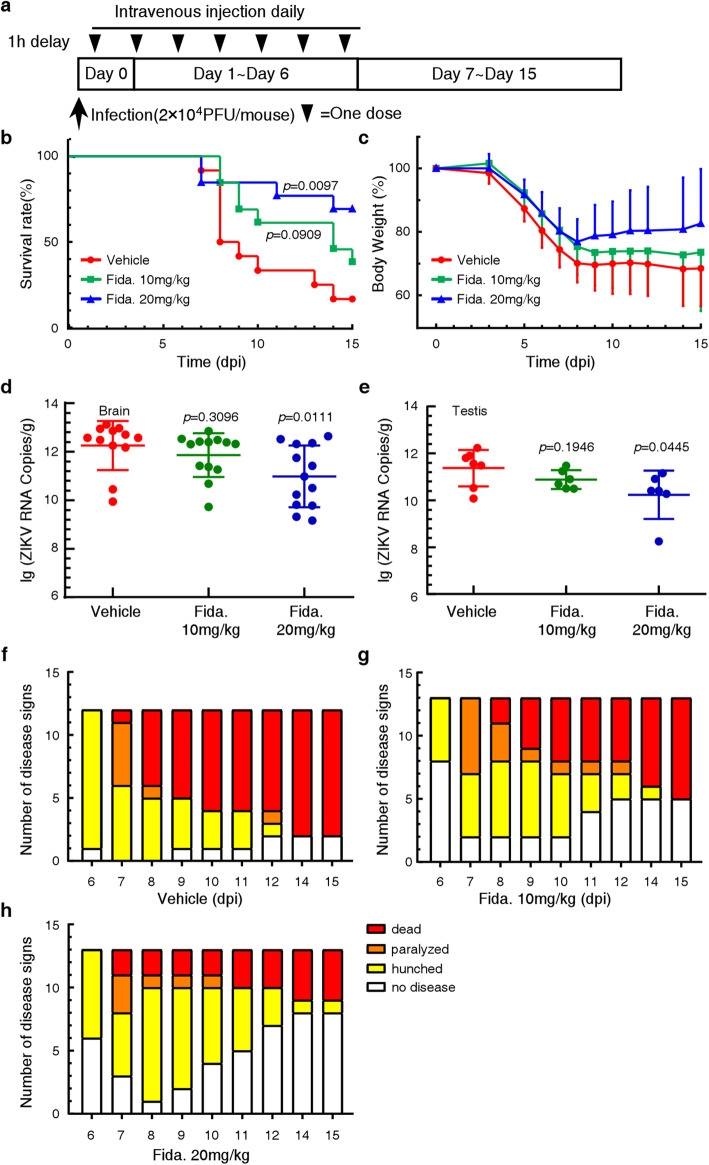Fig. 4.
Antiviral efficacy of fidaxomicin in vivo.a Schematic illustration of the animal experimental design for detecting the anti-ZIKV (ZG-01) efficacy of fidaxomicin in vivo (n = 12–13 animals per group). Each mouse was infected by 2 × 104 PFU of ZIKV. b The Kaplan-Meier survival of ZIKV-infected mice treated with fidaxomicin at the indicated dosages or with control vehicle. c Changes in animal body weight were calculated daily for ZIKV-infected mice treated with fidaxomicin at the indicated dosages or with control vehicle. d, e Tissue viral loads in the brains (d) and testes (e) of ZIKV-infected mice were determined by RT-qPCR (p value, compared to the vehicle-control group). f–h Neurological symptoms of ZIKV-infected mice observed in the vehicle-control group (f) or in the fidaxomicin treatment groups (g, h) were assessed at indicated dpi. Each mouse was assigned with dead (euthanized or dead), paralyzed (dragging rear legs and/or blind), hunched (ruffled coat, hunched, and/or moving slowly), or no disease in the process of experiment. Data represent results from three independent experiments

